Air Transport System
| Website: | Hamburg Open Online University |
| Kurs: | MoGoLo - Mobility of Goods and Logistics Systems |
| Buch: | Air Transport System |
| Gedruckt von: | Gast |
| Datum: | Dienstag, 23. Dezember 2025, 21:51 |
Beschreibung
In this section, you will learn more about the air
transport system. The air transport system will
be presented according to the structure of the conceptual system model of transport and traffic.
You will learn more about the goods, being
transported by air, the different kind of airplanes, used air corridors
and airports.
1. Introduction
In this section, you will learn more about the air transport system. You will get to know the activities that drive this system and the goods that are transported by air transport. You will then be introduced to the airplanes used for transportation. In addition, the infrastructure of the air corridors and its airport facilities will be explained. Finally, the advantages and disadvantages of air transport will be highlighted.
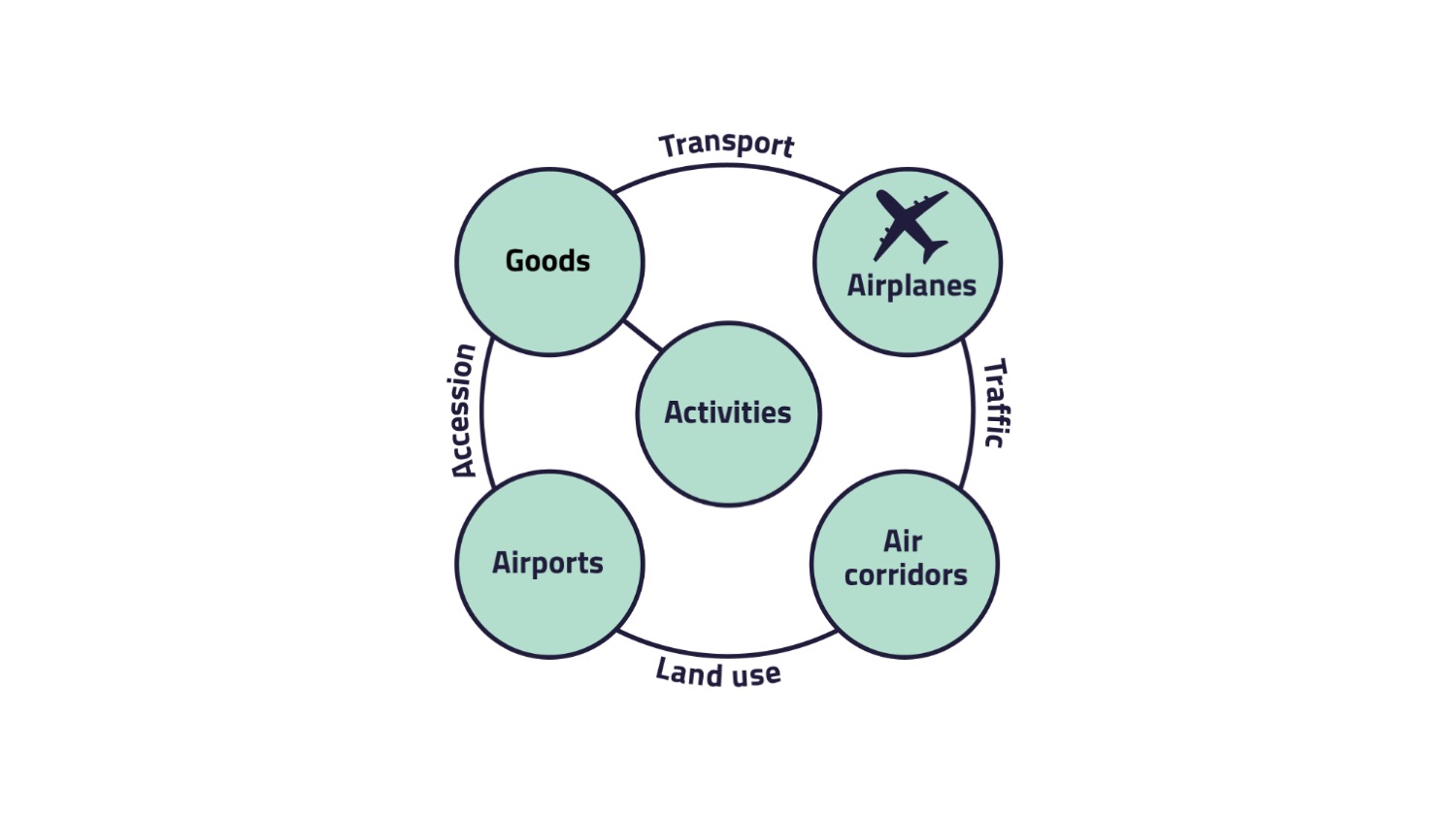
2. Activities
On this page, the element "Activities" will be presented to you.
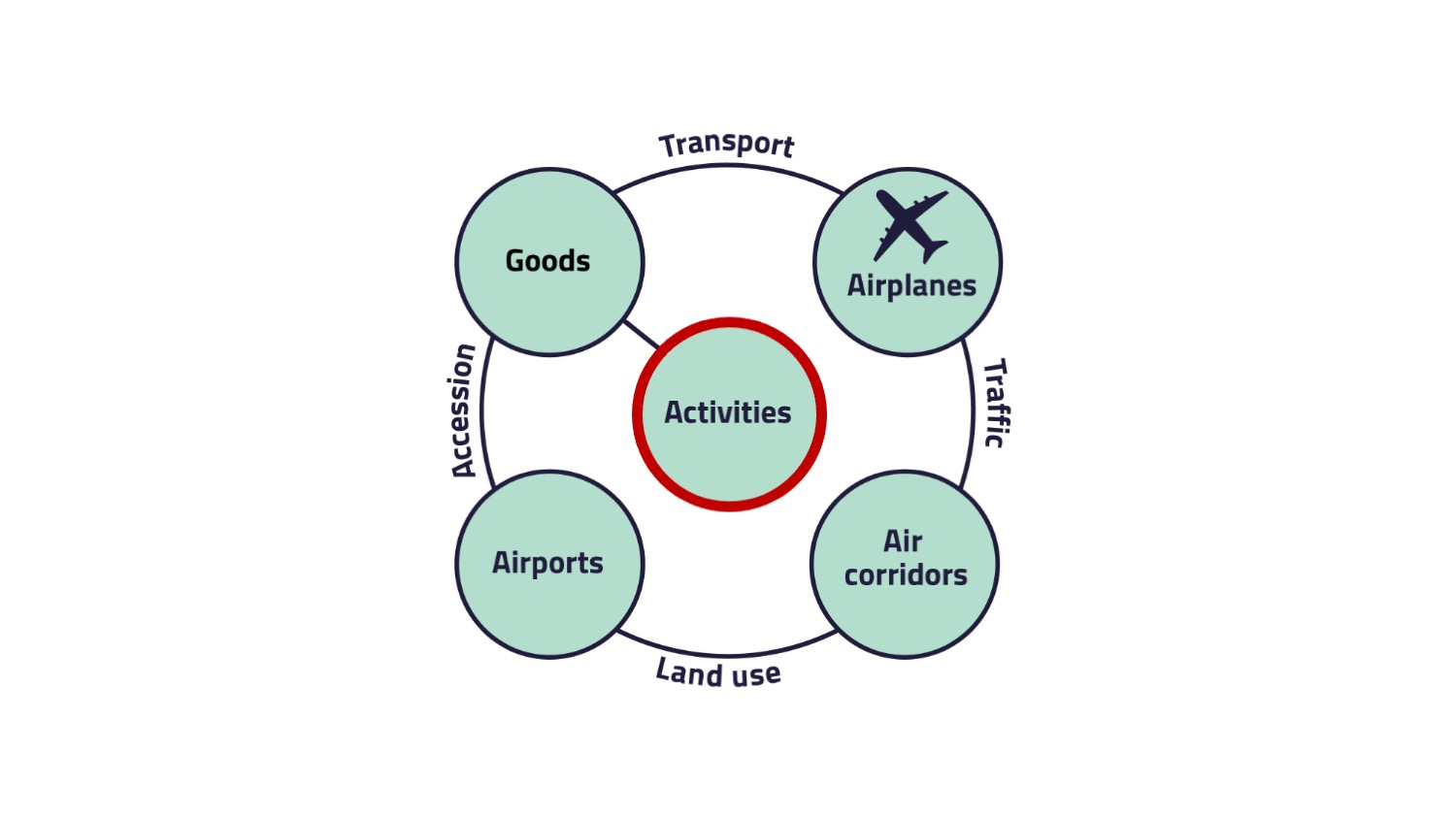
The activities require the presence of persons and goods at specific facilities that are specially designed to incorporate certain types of activities.
- Each such activity creates the demand to ensure accession to the facility where the activity is scheduled to take place.
- This creates the demand for offering transport options
- When the transport option is realised, traffic is generated.
- Thus all demand is a derived demand, which are all generated by the planning and execution of human activities.
- So we as consumers drive the system, while the order is the steering medium.
Literature
3. Goods
Different kind of goods can be transported by air, which will be presented to you on this page.
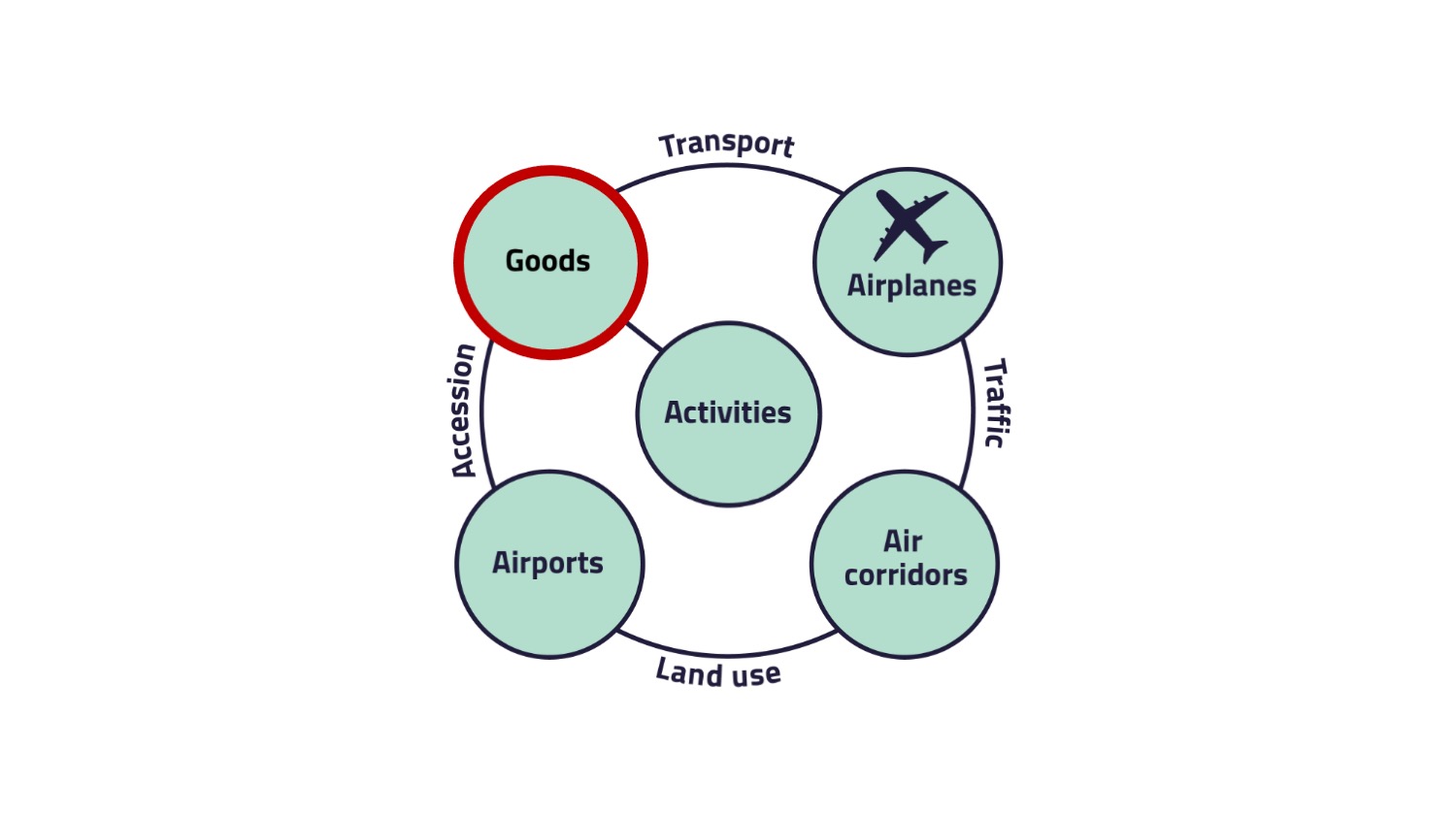
The most common types of goods being transported by air are
- emergency shipments
- perishable goods (goods with a physically limited shelf life, goods with a rapid loss of value due to market conditions, e.g. clothing)
- goods with a high value-to-weight ratio (electrotechnical, precision mechanical, pharmaceutical and optical products, e.g. computer processors, PCs, cell phones, tools, medicines, cameras, etc., as well as art and other valuables)
The three groups of goods, that are mainly shipped by air freight in Germany are electronic goods, machines and optical devices.
For air transport, air traffic containers are being used. Those containers are unit carriers and are adapted to the shape of the plane (figure "Air containers in an airplane").
The following pictures are showing different kinds of air traffic containers. As you can see, the shapes of the containers are adapted to the shape of the airplanes. Containers for the lower deck are having a flattened side and corner, so that they fit better to the round shape of the airplane. Containers for the middle deck don‘t always need to have this adapted shape, but for the containers at the edge, a lot of times the upper corner is flattened as well.
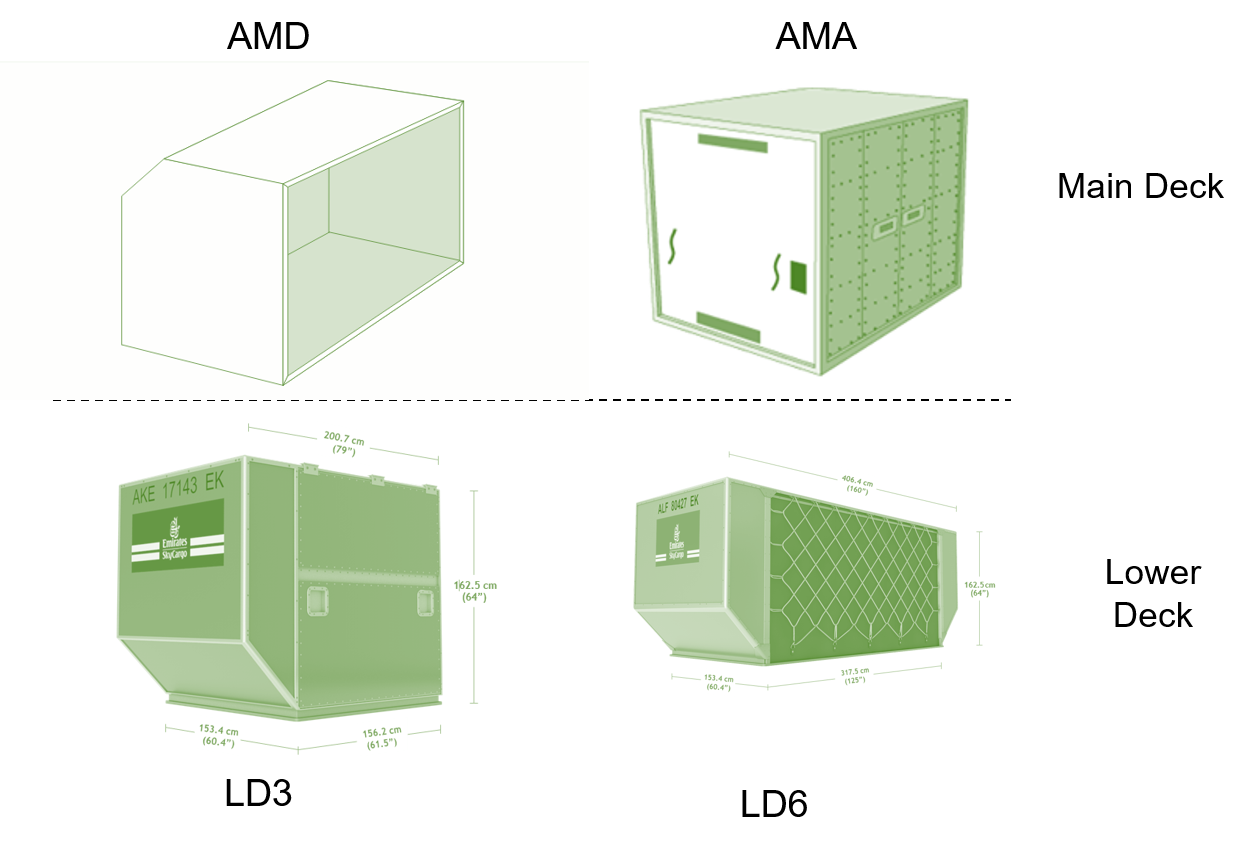
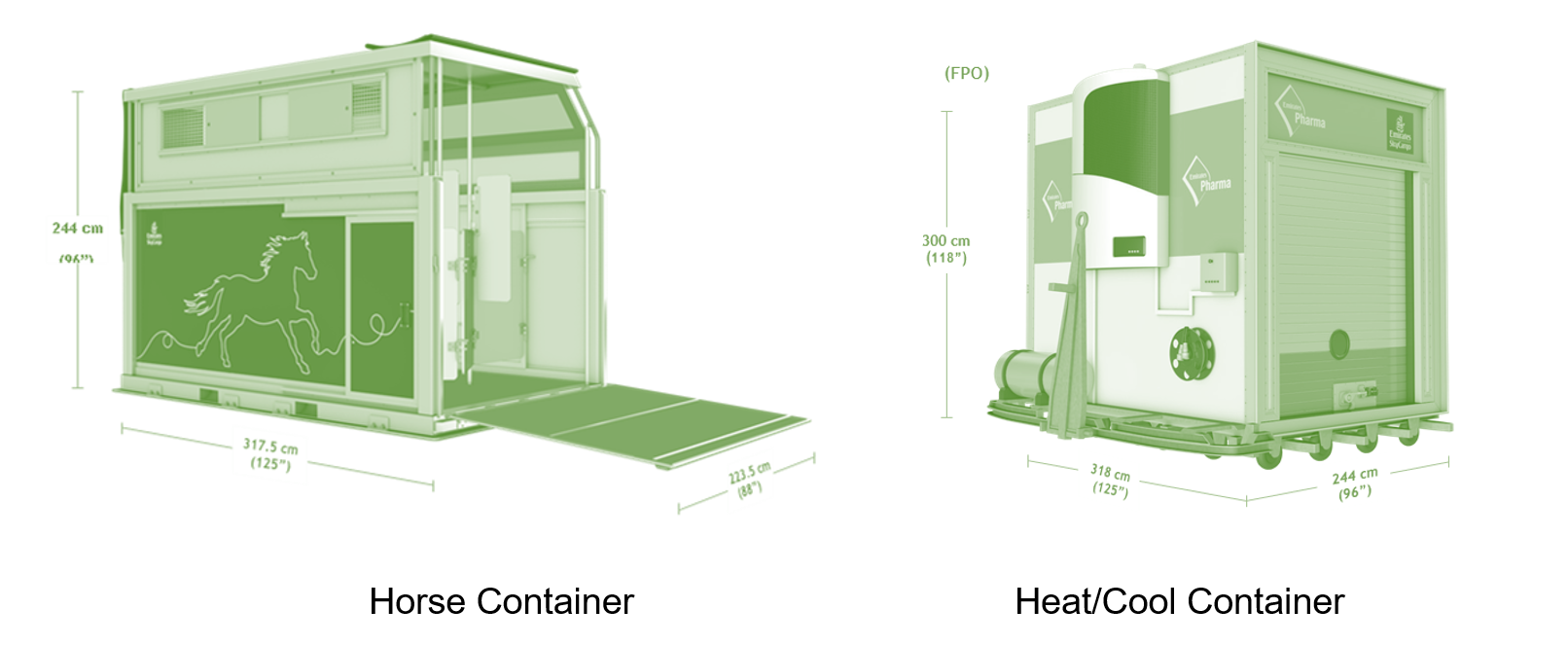
Transport
While the classic D2D (Door-to-Door) Transport has set the focus on all cargo and takes around 5-6 days, the focus of the integrator D2D Transport is set to cargo up to 500kg and takes around 2-3 days.
The following figure "Hub-and-spoke systems" shows a hub-and-spoke network. In this case, the hub in Germany is located in Frankfurt. Some of the most important hubs worldwide are marked in red.
More than half of the total air freight volume is distributed among 15 cargo hubs worldwide like Memphis, Hongkong, Tokio, Frankfurt, Shanghai, Singapore and Paris. In Germany, the air freight is concentrated in Frankfurt and Leipzig/Halle (=73 % of the total air freight volume). 92 % of the total air freight volume is handled in Frankfurt, Leipzig/Halle and Köln/Bonn.
Literature
3.1. Quiz - Goods in air freight
Feel free to check your knowledge with the following questions.
4. Airplanes
On this page, the movables of the air transport system model are presented to you. In terms of air transport, those movables are the "Airplanes".

Different types of aircraft are used for air freight transportation, depending on the quantity of goods to be transported and the transport distance.
Overview freight airplanes
Current model series Airbus
- A320 freighter family
- A350F
- A321P2F
- A330-200F
- A330-P2F
- BelugaST
- BelugaXL
- Boeing 777F
- Boeing 777-8F
- Boeing 747-8F
- Boeing 767-300F
- Boeing 767-300BCF (Boeing Converted Freighter)
- Boeing 737-800BCF
- Boeing MD-11
- Antonow AN-225
While the A319 and the A330 are transporting passengers and freight at the same time, the A321P2F, A330-200P2F, BelugaST, BelugaXL and Boeing 777F are used exclusively for freight transport..
Traffic
Air Traffic Management Systems
Air traffic management (ATM) means the aggregation of the airborne and ground-based functions (air traffic services, airspace management and air traffic flow management) required to ensure the safe and efficient movement of aircraft during all phases of operations.
Air traffic control (ATC) service means a service provided for the purpose of:
- preventing collisions: - between aircraft, and - in the maneuvering area between aircraft and obstructions.
- expediting and maintaining an orderly flow of air traffic.
Air Space Management means planning and dividing available airspace with the aim of making the best possible use of it.
- the maximum utilization of existing capacities must be ensured and
- congestion situations in individual traffic areas must be avoided by regulating traffic.
As presented to you before, the air traffic can be carried out either by passenger and freight airplanes or by only freight airplanes.
Intercontinental flight passage with belly cargo
The share of revenue on an intercontinental flight in the air freight area of an airline can account for up to 20 %. Air cargo thus plays a significant role in the profitability of an intercontinental flight. If there is unpaired traffic (e.g. west-east weakness) in the air freight area, this does not necessarily lead to the discontinuation of the route service. This is quite different in the passenger sector (First, Business and Eco Class). Not all intercontinental connections are the same. A distinction must always be made between hub feeders and non-hub feeders, which have different value and contribution margins for the airlines.
Intercontinental all-cargo flight
The air cargo revenue share on a freighter flight is 100 %. It is therefore a decisive factor in determining the profitability of a freighter flight. If there is unbalanced traffic (west-east weakness) and/or poor yield (rate) in the air cargo sector, this usually leads to the discontinuation of route operations in the long term. Also in the case of a freighter flight, a distinction must be made between hub and non-hub flights, which have different value and contribution margins for the airlines.
Literature
4.1. Quiz - Airplanes and air traffic
You can test yourself with the following questions:
5. Air corridors
This page will deal with the element „Infrastructure“ of the conceptual system model of transport and traffic.
In case of the air transport system, air corridors are the underlying infrastructure that is used to transport goods from A to B.
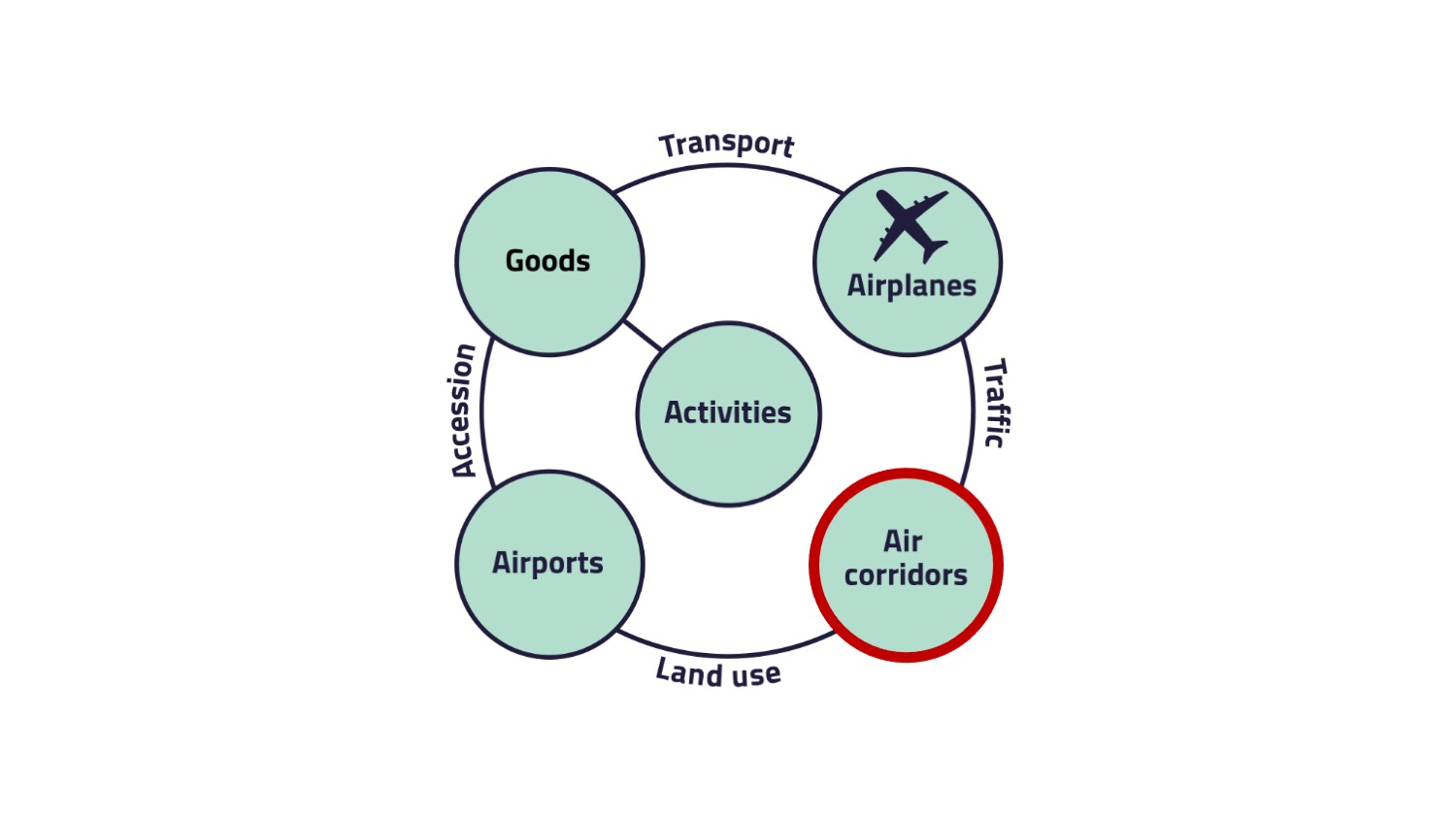
Air space structure
The following figure shows the different airspace classes.
AMSL: Above mean sea level
FL: Flight level
Air Navigation Services are used to ensure safe air traffic.
Air Navigation Services (ANS) includes air traffic services, communication, navigation and surveillance services, meteorological services for air navigation and aeronautical information services. The objectives of ANS are to:
- prevent collisions between aircraft;
- prevent collisions between aircraft on the maneuvering area and obstructions on that area; note that this objective does not include the apron and ANS in general is not intended to prevent collision with terrain.
- expedite and maintain an orderly flow of air traffic;
- provide advice and information useful for the safe and efficient conduct of flights;
- notify appropriate organizations regarding aircraft in need of search and rescue aid, and assist such organizations as required.
The relation between the air corridors and airports is called land use.
Land use
Literature
5.1. Quiz - Airspaces
Feel free to check you knowledge on air corridors by answering the following question.
6. Airports
On this page, you will learn more about the element facilities. In the air transport system, the facilities are called "Airports".
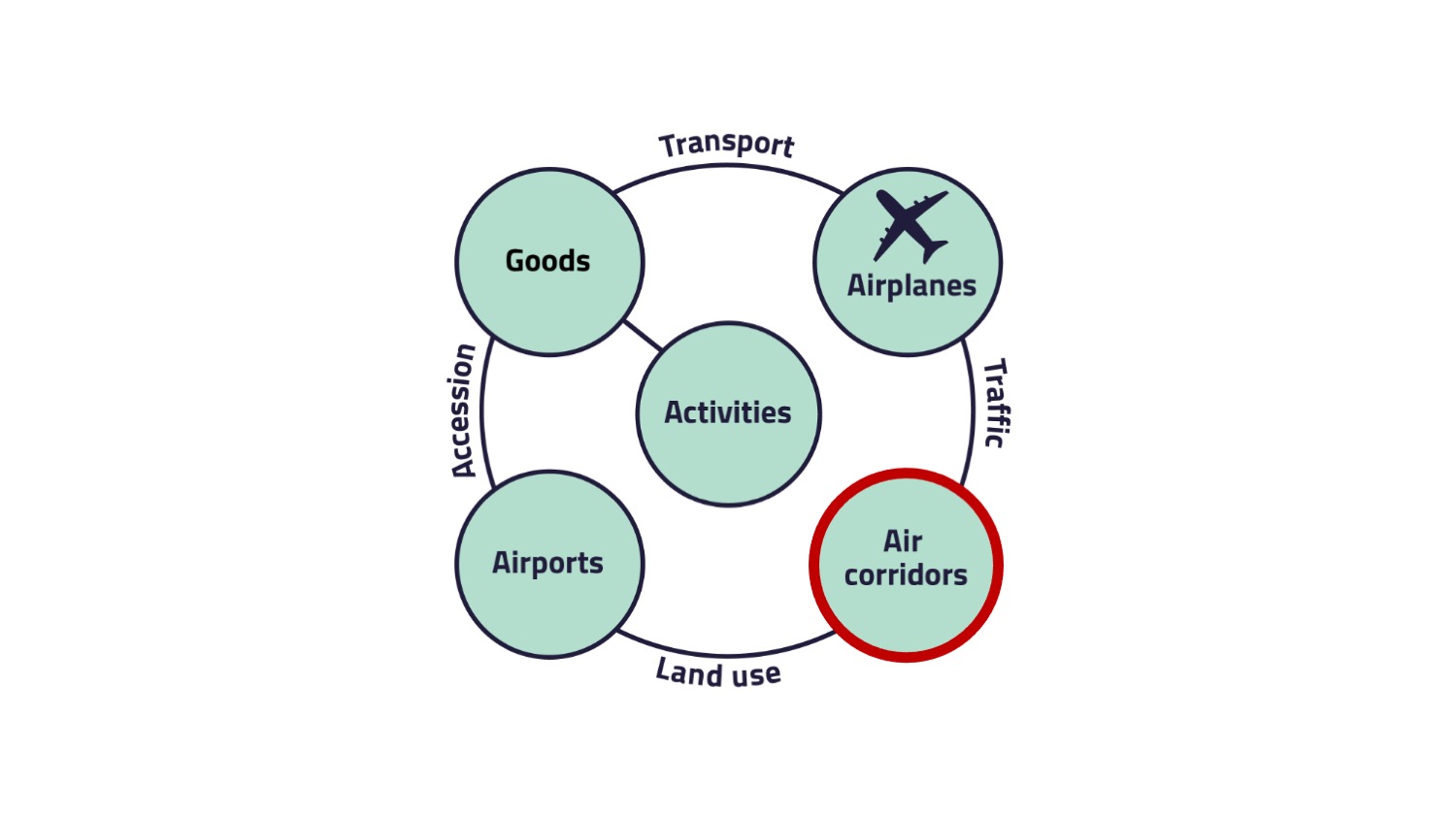
Therefore, airports are often gateways to large Hinterland regions and are not only for realising modal shift, but are multifunctional hubs, often providing handling and storage functions as well.
According to the Federal Aviation Administration (FAA) (2021), an airport is “any area of land or water used or intended for landing or take-off of aircraft including appurtenant area used or intended for airport buildings, facilities, as well as rights of way together with the buildings and facilities.”
Depending on its size, an airport has different infrastructure such as hangars, aircraft maintenance facilities, ground handling facilities, air traffic control and service facilities for passengers (restaurants, lounges and security services).
Airports link land- and airside modes of transportation and have three main functions.
- Route safety function; which includes ensuring safe take-offs and landings, as well as safeguarding the flow of traffic on the airfields.
- Clearance function; which includes the operational handling of aircrafts as well as the handling of the cargo (passengers, freight or mail).
- Support function; which are focused on the ancillary tasks associated with air traffic. This includes general auxiliary tasks, such as maintenance tasks, as well as special auxiliary tasks that generally serve to satisfy the needs of airline customers and airport visitors.
In Germany, the most important airports for cargo are Frankfurt, Leipzig/Halle and Köln/Bonn.
An exemplary layout of an airport is shown in the following figure.
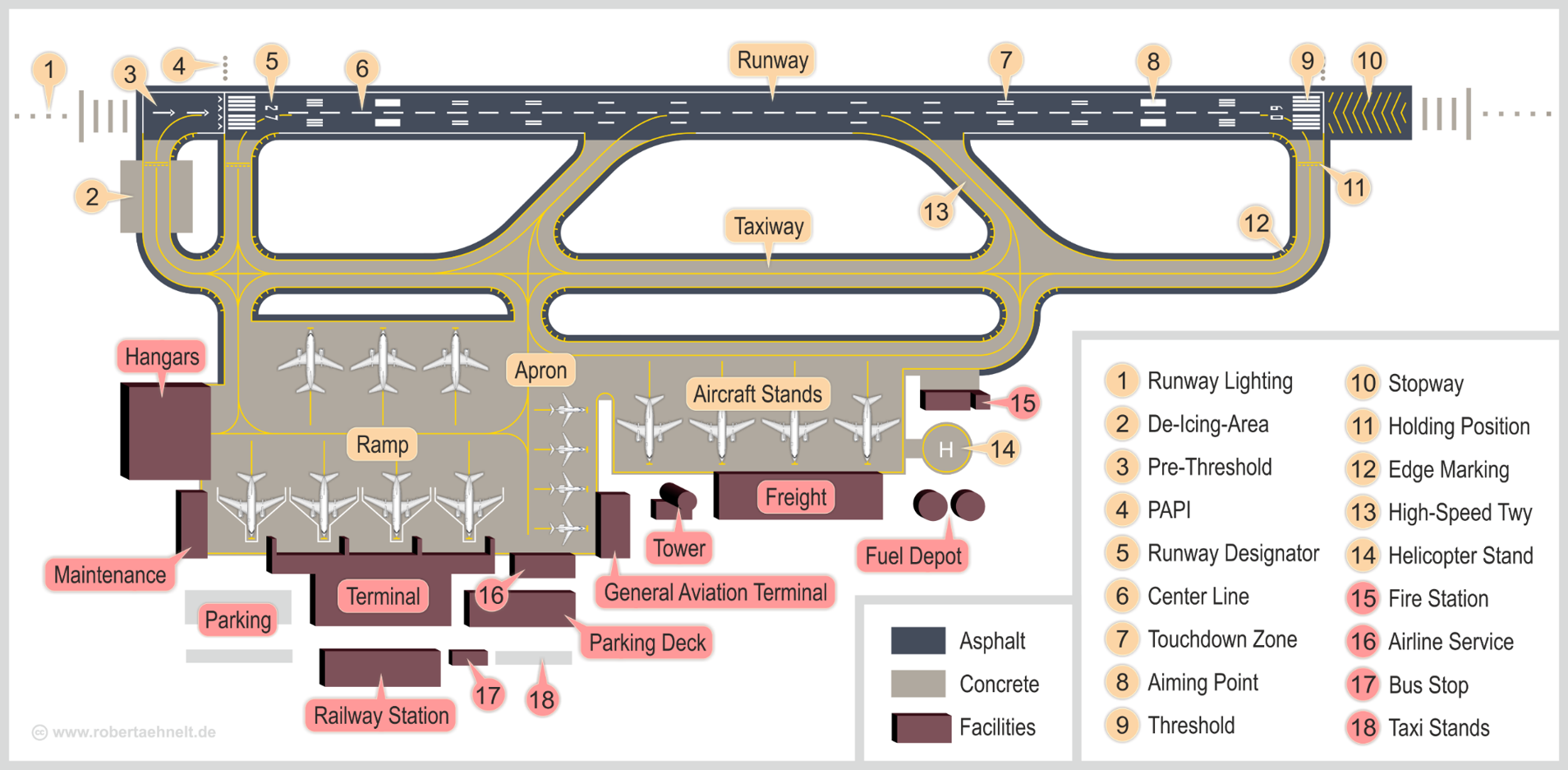
The relation between airports and goods is called accession.
Accession
The accessibility of locations can be considered from three perspectives:
From a micro perspective, it is the possibility of goods being handed over to the recipient. Here it is usually construction measures of the building that limit the possibilities of direct transfer of goods (e.g. via a ramp) from the road vehicle to the recipient.
The meso perspective refers to the accessibility of the location of the consignee. Consignees with many suppliers in trade or industry or, for example, on large construction sites often experience traffic jams and significant time losses on the part of the carrier.
The macro perspective is the condition of the infrastructure to access a location. The dimensions (weight and size of the permissible vehicles) play a role here, as do possible restrictions on the time or space available for certain types of vehicle. But also the density of the traffic flow on the infrastructure restricts the accessibility of a location in the macro perspective.
There are a number of air cargo challenges in Germany, some of which are due to limited accessibility:
- overcrowded HUBs (turnaround times at FRA (Frankfurt) up to 12 hours!)
- air traffic control delays at the HUBs
- LEJ (Leipzig/Halle) has no original traffic
- congestion on the highways (travel time to and from FRA up to 8 hours)
- increased costs for ground transport (tolls, driving times for truck drivers, congestion)
- political objectives: Emission reduction (road and air)
- night flight bans, especially FRA, MUC (Munich) and BBI (Berlin-Brandenburg)
You can check your knowledge about airports by answering the following question.
Literature
Flämig, H., Sjöstedt, L., Hertel, C. (2002): Multimodal Transport: An Integrated Element for Last-Mile-Solutions? Proceedings, part 1; International Congress on Freight Transport Automation and Multimodality: Organisational and Technological Innovations. Delft, 23 & 24 May 2002. (modification of Sjöstedt 1996)
6.1. Quiz - Airports
7. Summary
In order to sum up the topic „Air Transport System“, we will present you some advantages and disadvantages of the air transport system.
Advantages
- high transport speed
- no need for packaging enduring see transportation
- high safety standards and low transport risks
- overall logistics concept is less susceptible to disruptions than that of other freight methods
- high degree of punctuality
- high transportation costs
- high energy consumption
- transport of dangerous goods usually excluded
Sometimes, a combination of Sea and Air Transport is the best transport option. The following figure shows, what kind of goods might be suitable for a Sea-Air-Transport.
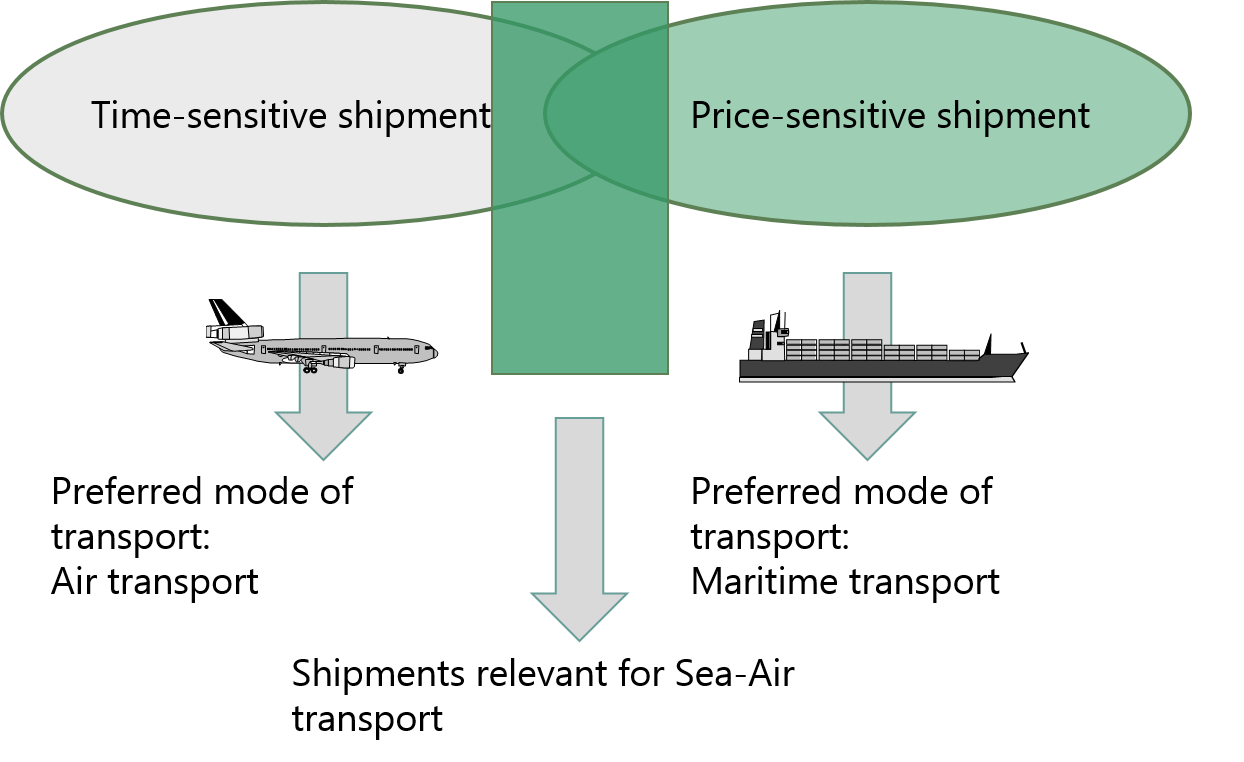
By choosing the intermodal Sea-Air-Transport, the CO2 emissions and transport costs can be reduced (compared to air freight only) while also the transport time can be reduced (compared to sea transport only).
If you are interested in other modes of transport too, feel free to check our other topics maritime transport system, road transport system, rail transport system and inland waterway transport system.
Literature
7.1. Quiz - Advantages and system model air transport
You can check your knowledge about air transport with the following quiz.
8. Literature
Airbus (2021): A319ceo. URL: https://aircraft.airbus.com/en/aircraft/a320/a319ceo (last access: 30.03.2022).